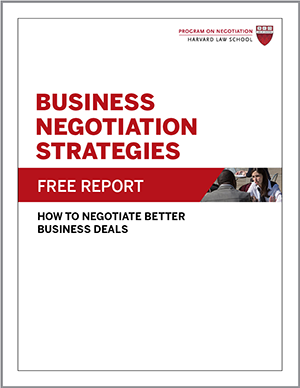
A draft agreement may allow you to control the early stages of talks, but be aware that it also can obstruct agreement in the long run.
Putting a draft on the table may lock parties into bargaining positions prematurely, interfering with a search for common interests and creative options.
Similarly, one of the functions of the early phase of a negotiation is to allow both sides to gather and share as much information as possible about each other; focusing on the draft at the outset is likely to hamper this vital process.
In addition, although corporations may believe their standard-form contracts can be used widely, drafts may turn out to be inapplicable to local conditions or the situation at hand.
Consequently, unyielding insistence on your terms, especially in international deal making, may lead to unsatisfactory results for both sides.
- For example, one American fast food company had language in its master franchise contract requiring the construction of top-quality, snow-proof buildings.
- The company’s refusal to change the wording imposed burdensome costs on its franchise in Melbourne, Australia, a city that does not experience heavy snows.
It’s critical that you review an existing draft carefully before each new negotiation to ensure that its terms are appropriate.
Finally, note that the party introducing the draft is usually in a superior bargaining position.
Consequently, the weaker party may view the presentation of a draft as an arrogant power play. At the very least, instilling suspicion and hostility in your counterpart will prolong talks and inhibit the development of a successful working relationship.
These risks suggest that although writing a draft may be an important aspect of negotiation preparation, you should not automatically introduce the document as an opening gambit.
- Instead, carefully analyze each situation to determine the appropriate moment to present your draft during the negotiation process, if at all – and recognize that inflexible insistence on the draft’s terms could derail any chance of agreement.
Related Business Negotiations Article: Real World Negotiations Examples: Bargaining for a New Car – Learn the negotiating skills and negotiation tactics behind haggling for a new car and find out what negotiation research says about gender and new car negotiations.
Originally published April 2013.




